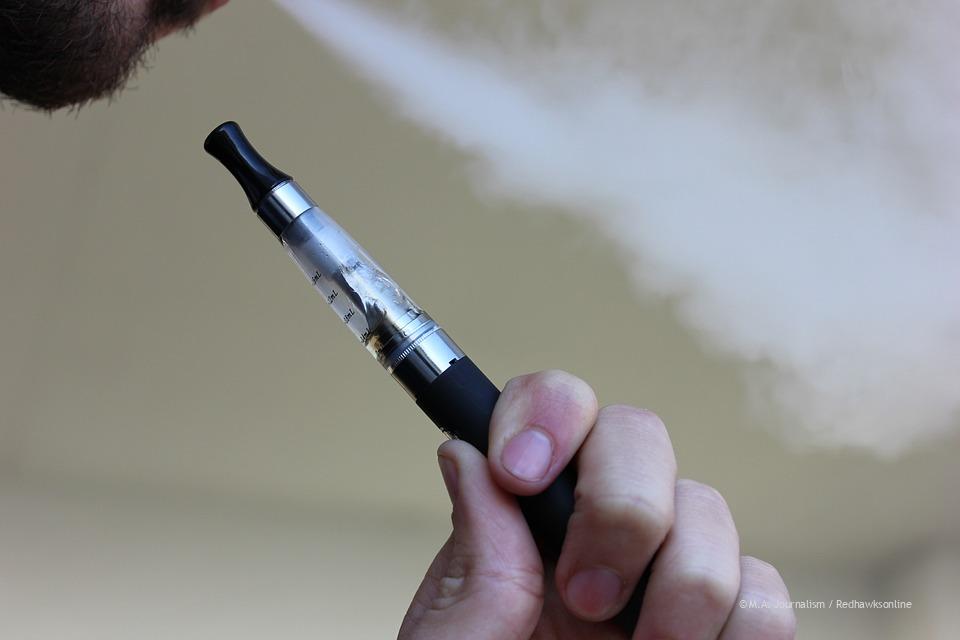Vape nation? We’re not far off. Many have likely noticed the jump in vape interest in recent years. In fact, according to a study by the National Institute on Drug Abuse, 16.2 percent of high school seniors reported they used an e-cigarette in the past 30 days, while only 11.4 percent of high school seniors stated that they had smoked cigarettes during the same period. So what’s with the rise in this new form of tobacco?
“[Vaping] is very popular at Minnehaha because it is relaxing and is so normal to do nowadays,” said a sophomore Minnehaha student.
Vaping was created with the intent of helping to curb cigarette addict’s smoking habits. Vaping is considered “smokeless smoking,” and eliminates some of the dangers tar causes in traditional cigarettes. In an article published by the National Cancer Institute, they stated, “Tar contains most of the cancer-causing and other harmful chemicals found in tobacco smoke.” However, some of the recent debates regarding vaping have been whether is used as a gateway to other forms of tobacco use, such as cigarette smoking.
The topic of vaping is deeply divisive. Health and government experts have released data that suggests e-cigarettes cause “wounds that won’t heal in teens” (Daily Mail) but other reports have declared “e-cigarettes around 95% less harmful than tobacco.”(Gov.Co UK)
So which is it?
The problem is, vaping is a relatively recent phenomenon so there is little research conducted regarding either the short or the long-term effects of vaping. Answers on the effects of vaping greatly vary.
On the pro-vape side of the spectrum, many people say that vaping can help curb cigarette addiction and it that it doesn’t bear the same health risks that cigarettes do. Many pro-vape claims state that vaping is better in comparison to a different forms of substance use such as cigarette smoking.
Ozan Ademi, an employee at Smokedale, a local tobacco and e-cigarette store in Stadium Village, said, “Vaping is definitely healthier than cigarettes because there is no tar in the liquid and you don’t get your lungs clogged with tar. Research shows that the tar is the worst part of smoking cigarettes and tobacco in general.”
Ademi adds, however, “Vaping has its bad parts. People start vaping and they think it’s a safe alternative and they vape a lot, that can also be hard on your chest if you smoke a lot.”
“My opinion is that vaping is ok,” said another Minnehaha sophomore. “It is not horrible, but it is not exactly great. Nicotine is not a multivitamin, but it’s better than heroin. I never really understood the attraction to it, yet I do it myself. I think the idea of vaping seems cooler than it actually is and it is overrated.”
Others view vaping as dangerous and detrimental to overall health.
“Some people use vaping as a gateway, most people starting it are assuming there are no nicotine involved, however, there still is,” said upper school nurse, Heidi Streed. “Kids and adults can try adding in different things, they can try adding in marijuana and think it’s not a big deal then continue on with the next things.”
Some students believe vaping is not worth investing time and resources into doing.
“Vape culture is based around trying to make yourself look cool, and I don’t believe that it is something that you should base your life around or something you should care about in your day to day life,” said a Minnehaha senior. “If you really want to vape, go for it, I just don’t think it is a good use of your money time, resources, energy, or life. Don’t vape, it’s for nerds.”
The fact is, many students are oblivious to the actual rules regarding vaping due to the ambiguity surrounding the topic. The penalty is the same as that of cigarette smoking, which is in the school chemical policy.
“[Vaping] is against the law, anything that is against the law is against school policy, too,” said Lance Johnson, dean of students. “Kids have to be 18 years old to vape, for our 18 year old kids here at school it still doesn’t matter because they fall under school jurisdiction. So we just say, this is against our school rules, much like tobacco. From what I’ve read, most of the vaping products contain tobacco, which obviously we want to discourage.”
With e-cigarette use on the rise, we may not have yet seen peak vape. It’s yet to be seen whether this “vape nation” will be any less detrimental to public health than traditional cigarette tobacco smoking. But one thing is sure: There’s likely to be strong opinions on both sides of the issue for the foreseeable future.
So, the question is: “to vape or not to vape?” In the end, each individual holds the choice in their hands. With so many variations in opinions and data, the real question should be: “who’s telling the truth?”

